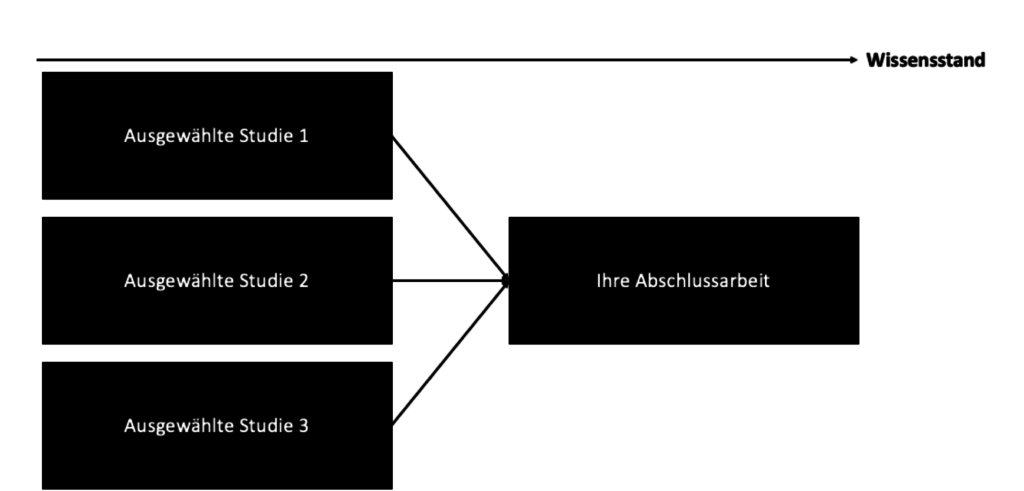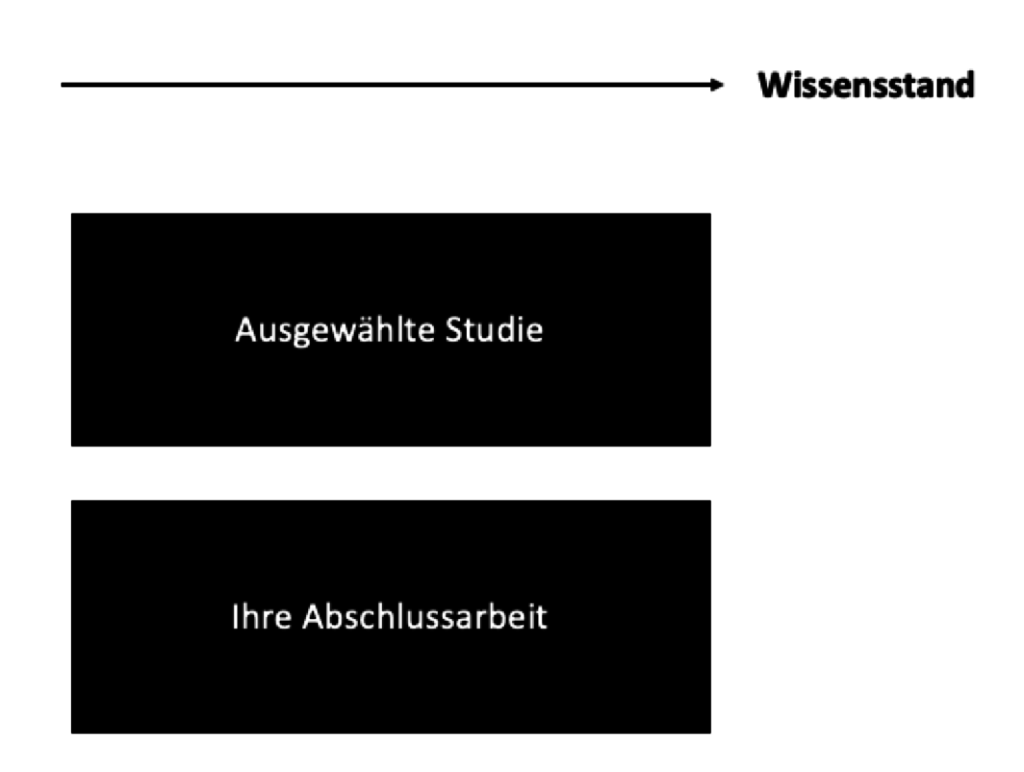Are you currently looking for a topic for a thesis and you don’t yet know exactly how to proceed? Are you looking for literature and want to form a topic from it but you cannot find anything or the supervisor does not accept the topic? Then I would like to show you three ways that can help you with this dilemma!
Tip: You should roughly know in which direction you want to go, eg big data, agility, etc. If you don’t already know, then take a look at mine Topic areas for digitization as inspiration.
Requirement: existing literature
In the academy you always build your knowledge on other studies (existing knowledge). So to do this you need to find other studies first. It is not or hardly possible to research a topic freely without literature in the thesis. You can do that if you later want to win the Nobel Prize but first dedicate yourself to your thesis for us. If you do want to try it, take a look at my article on Grounded Theory .
So let’s stay with the standard case that you base your topic on literature. Look up academic databases using various search terms and try to find papers which roughly do what you want to do. I recommend the databases Sciencedirekt, Emerald, Google Scholar and Springerlink. The papers should have the following properties (I like to call them mother papers):
- The papers are published in academic journals (no specialist articles)
- The papers are exciting in your eyes
- the papers are still quite new (maximum 2-3 years old)
- I recommend 3-5 papers (my doctoral thesis had 4)
Reading tip: Find mother paper
Now take all of these papers and throw them in a pot. Then stir vigorously and you have a topic! Is it that easy? You will quickly find out that it is not! For this reason, I am now giving you three options for creating a topic from the 3-5 studies selected.

Limitation : I think that it is not that critical in the thesis and that you can choose the papers yourself. If you do research at the highest scientific level, you have to show precisely: Why did I choose these three studies and not three others? For example, I did a complete preliminary study to find my mother paper. However, this is not required in a thesis. You are welcome to add 2-3 sentences to the introduction, why you find these 3-5 studies so exciting.
Possibility 1: “think it up yourself”
The most common possibility is that students want to think of the topic themselves. This is usually very difficult and a tough discipline even for experienced scientists. But you can proceed quite simply: Read the outlook of the selected studies. Scientists are always encouraged to give an outlook on further research at the end of the study. Look what they recommend. If e.g. three studies say: please research work 4.0 in SMEs, then it would be great if someone, for example you, did that.

This procedure in the figure above is quite normal and is mostly used in science. You look for various studies that you like and see what is recommended in the outlook.
More specifically, I would like to give an example: If one study recommends examining the effects of executives on agile teams and another the use of software on executives, you can mix a topic. I could imagine that this could be used to examine how executives can use software to lead agile teams in the long term.
Danger : Be careful, however, to keep the mix meaningful. I often experience that the current state of knowledge is mixed up rather vaguely and that your thesis does not continue the current state of knowledge but explores something in between.

Option 2: continue a study
A second option is for you to continue a single study. This gives you the advantage that you only have to read the outlook for the various studies. See what the studies recommend to other researchers. For example, in my study on leadership, I recommend that the results can be deepened by means of an expert interview, or in my study on Work 4.0 that you can now also check the results from the point of view of building concepts and agility.
You are building your study directly on top of another study. I did this in my doctoral thesis and generated new knowledge in a very simple way. You thereby expand the current state of knowledge. Another advantage is that you can write to the author of the publication and hope for knowledge and coaching.
Reading tip: Procedure for my doctoral thesis

Option 3: Examine a study differently
A final and fairly easy option is for you to redo an existing study. The big advantage here is that you only have to change a few things. There are three ways of thinking:
- You believe that methodology of the study and check that the same results are obtained if the results are the same.
- You believe that Results Do not fail of the study and do the same research using a different method.
- You don’t think that General results are and re-run the results for a specific group or industry.
You can compare it a little with a cooking recipe. You doubt that the promised food will come out of the ingredients, which you currently have on your plate and cook it to be on the safe side (result) or you believe that you should proceed differently for preparation (method). You can change the ingredients or the method of cooking, for example a little more salt or another ingredient can improve the dish. Furthermore, you can, for example. If you have a pudding recipe, you doubt that this only applies to vanilla pudding and not to chocolate pudding.
Now you would like to know how exactly to carry out a study again. There are a few ways to do this, which I will list below:
- You change the research method (e.g. questioning instead of interviews)
- You change the target group (e.g. SME managers instead of project managers)
- You carry out the research methods slightly differently (e.g. new interview questions)
You do not expand the current state of knowledge, but consolidate the knowledge and secure it. You can also continue to hope for information from the author of the selected study. Perhaps he already has ideas on how his study can be redesigned. Using the example of my publications, my tips would be:
- Repeat execution my study on digital leadership with the help of interviews instead of a survey
- Another implementation my study on work 4.0 with the help of expert interviews or a survey
- Another implementation my study on agility . You check again whether agility is still a prerequisite for digitization.
Reading tip: qualitative and quantitative research

Conclusion
Finding a topic for the thesis is not as difficult as you might think. It is important to proceed systematically and to work slowly on the basis of selected studies. Make a decision as to whether existing results should be checked again or based on them. In the next step, build your research design around the topic you have found!
Reading tip: Build research design
Image source: Pixabay
[student] [fotolia]


